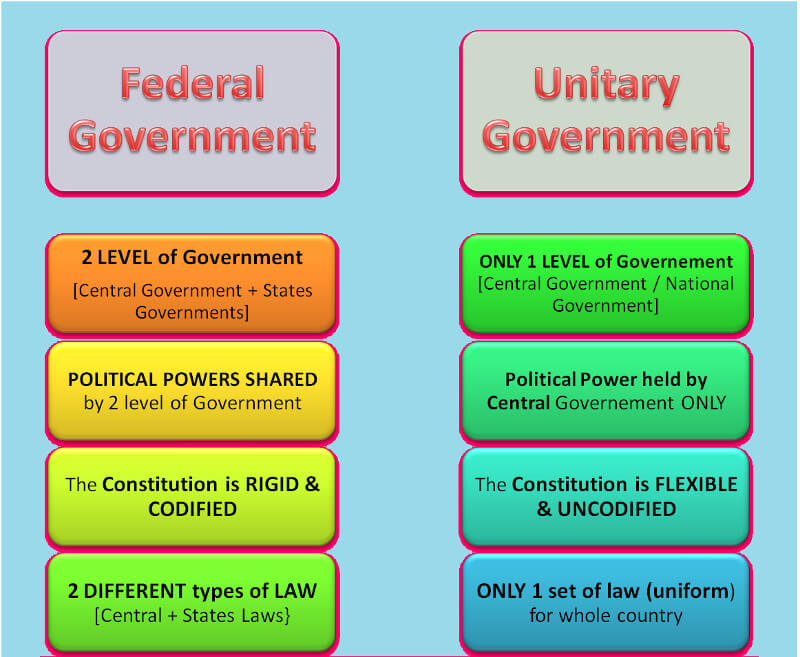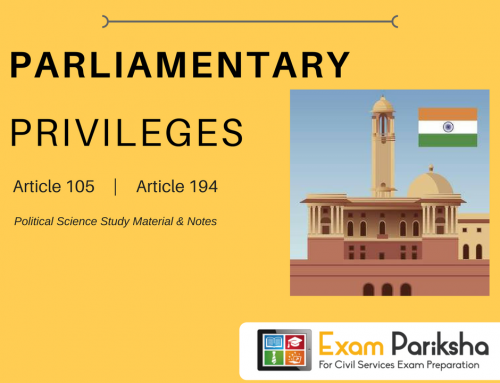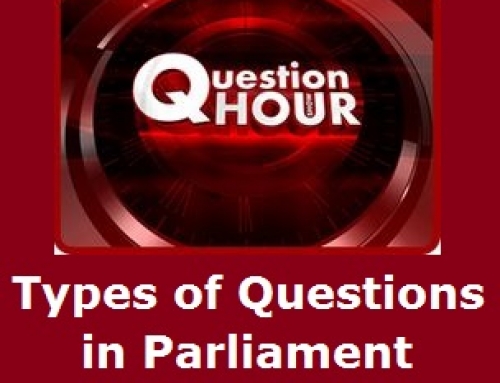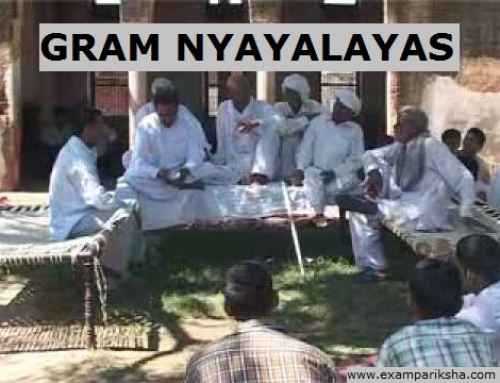Governments have been classified into Unitary and Federal based on distribution of power between national and regional governments. In a federal set up there is a two tier of Government with well assigned powers and functions. In this system the central government and the governments of the region act within a well defined sphere, co-ordinate and at the same time act independently.
The federal polity, in other words, provides a constitutional device for bringing unity in diversity and for the achievement of common national goals. Hence, India was made a Federal system of government.

Features of Indian Federalism
Features of Indian constitution that makes it federal are listed in the following points:
- Written Constitution: The most important feature of a federation is that it should have a written constitution, so that both the Union Government as well as the State can refer to that whenever conflict arises. The Constitution of India is a written and most elaborate Constitution of the world.
- Supremacy of Constitution: The constitution is the supreme because both the union and the states are given powers by the Constitution as to be independent in their spheres of governance. Both make laws conforming to the provisions of constitution otherwise they can be declared invalid by the supreme court through its power of judicial review.
- Rigid Constitution: The procedure of amending the Constitution in a federal system is normally rigid. Indian Constitution provides that provisions regarding the federal attributes can be amended by a special majority,i.e. such an amendment has to be passed by majority of total members of each house of the Parliament as well as, by two-thirds majority of the members present and voting there. Also, in addition to this process, such amendments must be approved by at least 50% of the states. After this procedure the amendment is signed by the President.
- Division of Powers : In our Constitution, there is a clear division of powers so that none violates its limits and tries to encroach upon the functions of the other and functions within own sphere of responsibilties. There are three lists enumerated in the Seventh Schedule of constitution, – the Union list, the State list and the Concurrent List. The Union List consists of 100 subjects of national importance such as Defence, Railways, Post and Telegraph, etc. The State List consists of 61 subjects of local interest such as Public Health, Police etc. The Concurrent List has 52 subjects important to both the Union and the State. such as Electricity, Trade Union, Economic and Social Planning, etc.
- Supremacy and Independence of the Judiciary: A very important feature of a federation is an independent judiciary to interpret the Constitution and to maintain its sanctity . The Supreme Court of India has the original jurisdiction to settle disputes between the Union and the States. It can declare a law as unconstitutional, if it contravenes any provision of the Constitution.
Nature of Indian federation
In spite of the fact that the Indian Constitution establishes a federal structure, it is indeed very different then a true federation. The framers of the Constitution have modified the true nature of Indian federation by incorporating certain unitary features in it. These are :
- The Constitution of India has federal features but it does not claim to be a federation. It calls India a “Union of States”. Article I of the Constitution describes India as a ‘Union of States’, which implies two things: firstly , it is not the result of an agreement among the States and secondly, the States have no freedom to secede or separate from the Union. Besides, The federation is a union because it is indestructible and helps to maintain the unity of the country.
- The Centre appoints the Governors of the States who enjoys extensive powers in special circumstances. Governor is the agent of the Centre in the States. In the past he Governor has acted more as Centre’s representative than as the head of the State. This enables the Union government to exercise control over the State administration.
- Unequal representation in upper house: The equality of units in a federation is best guaranteed by their equal representation in the Upper House of the federal legislature (Parliament). However, this does not happens in case of Indian States. They have unequal representation in the Rajya Sabha.
- Appointment of important organisation heads: All important appointments such as the Chief Election Commissioner ,the Comptroller and Auditor General are made by the Union Government.
- Single citizenship: There is no provision for separate Constitutions for the states. The States cannot propose amendments to, the Constitution. Amendments can only be made by the Union Parliament.
- All India Services: In order to ensure uniformity of the administrative system and to maintain minimum common administrative standards without impairing the federal system, All India Services such as IAS and IPS have been created which are kept under the control of the Union.
- Emergency Provisions: During Financial Emergency, the Center exercises full control over the State’s finances. In case of disturbances in any State or part thereof, the Union Government is empowered to depute Central Force in the State or to the disturbed part of the State.In all three types of emergencies, Centre is empowered to excercise full control over the state machinery.
- Parliament control over state: It can make laws to increase or decrease the area of any State and may alter its name and boundaries. It may alter subjects n the state list also.
- Unified Judiciary: Contray to the federal principle which has a dual system of Courts, India has unified Judiciary with the Supreme Court at the apex.
Hence it can be concluded that the Constitution of India establishes a strong Centre by showering all-important subjects to the Centre as per the Union List. The State Governments have limited powers while largely being dependent on the Centre. Especially, the States are dependent on the Centre financially. The States have to work in close co-operation with the Centre.
This has led to the contention that the Indian constitution is federal in form but unitary in spirit.
Constitutional experts call it ‘semi-federal’ or ‘quasi federal’ system. This is unique to India.





Sir .
What Emerging issues of Indian federalism
makes my concept clearer and knowledge more wider
Thanks for giving help to students like me will u plz write in geography…..
good job sir keep up the good work
Thank you so much for the appreciation. Feedback from our readers keeps us motivated. We look forward to see you around more often :)